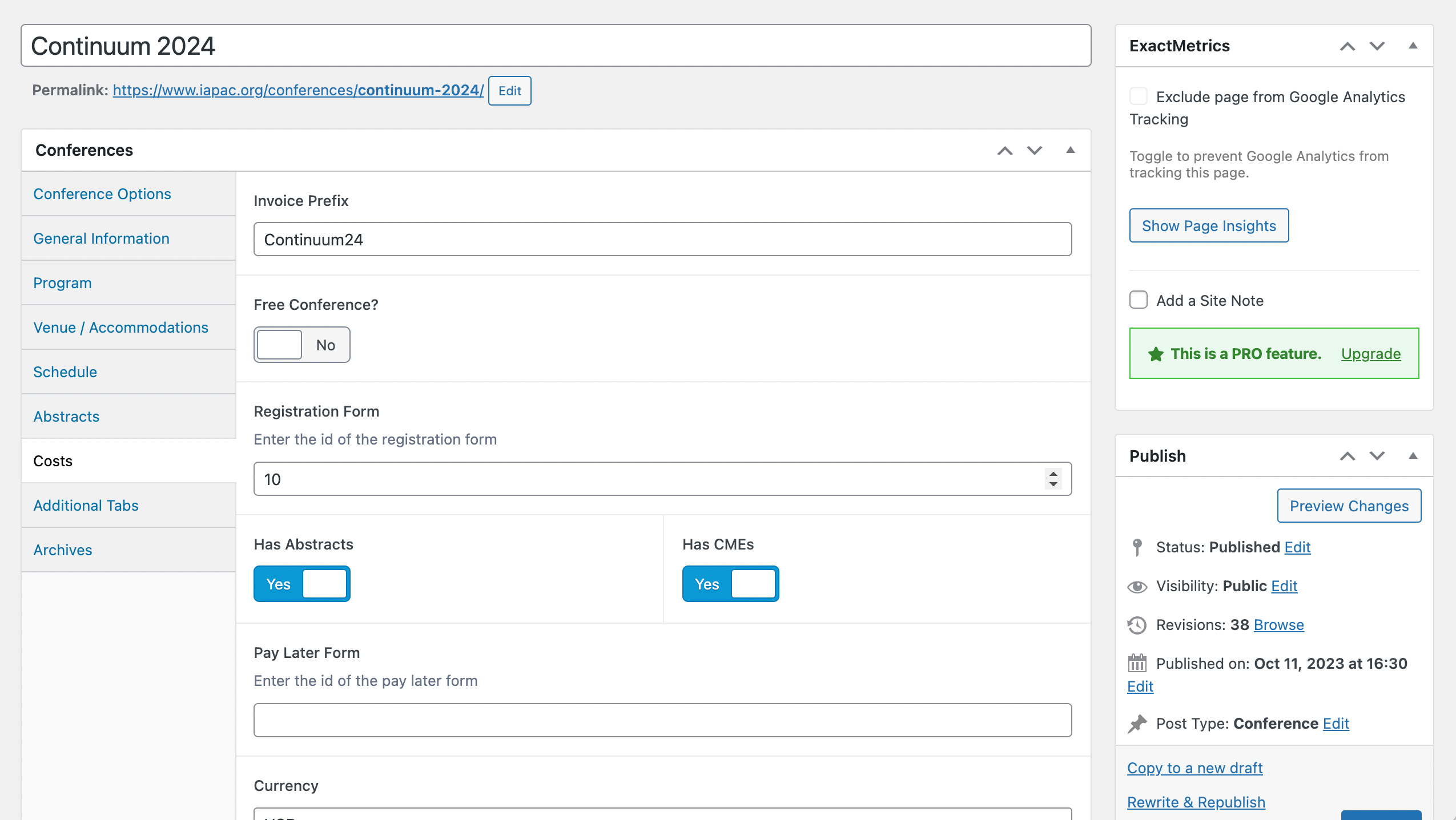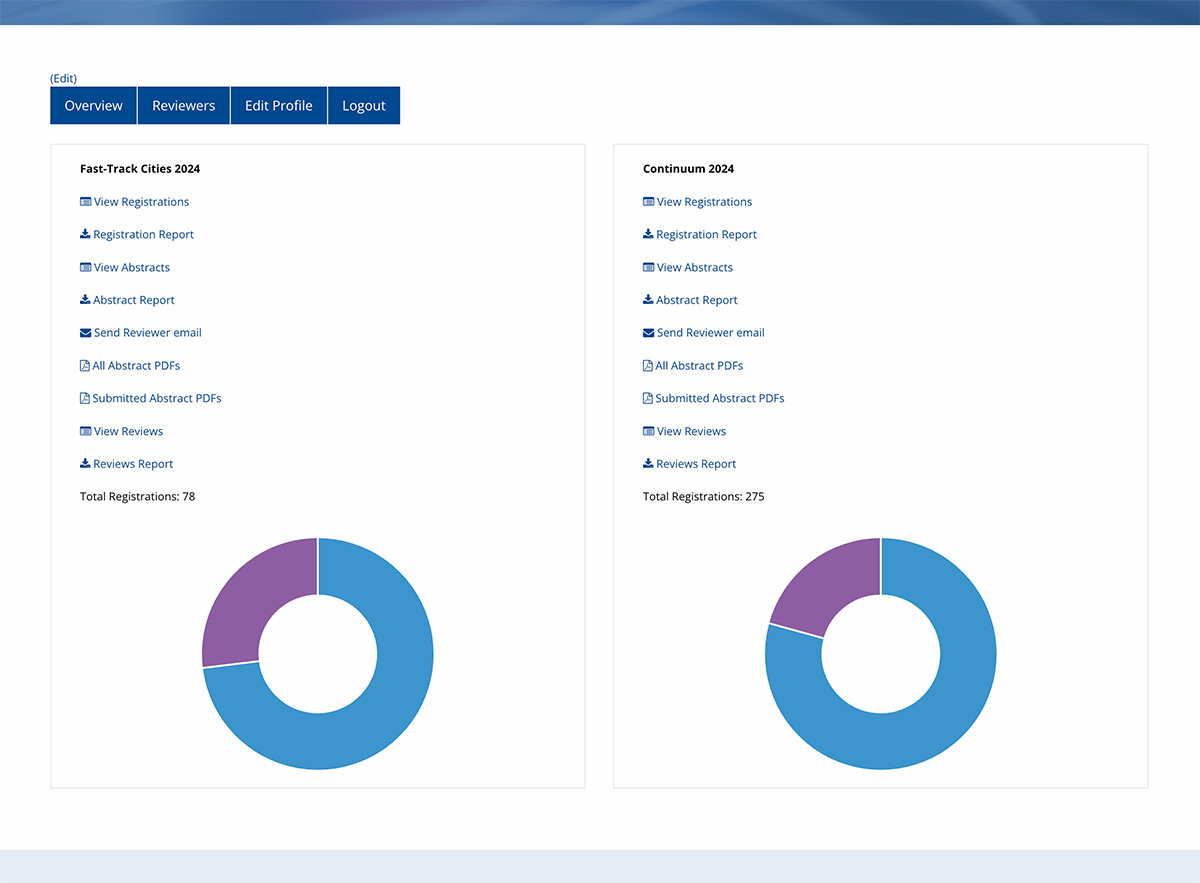Streamlining Conference Registration for IAPAC
Quick Facts
Skill Areas
- Client Engagement and Needs Assessment
- Process Innovation and Management
- Strategic Communication and Education
- User Experience Enhancement
- Problem-Solving and Adaptability
- Project Leadership
- Continuous Improvement and Efficiency
Background
As a conduit between the International Association of Providers of AIDS Care (IAPAC) and the technical team, I spearheaded IAPAC’s transition from a limited third-party conference management system to a customized, flexible web application. This shift, facilitated by adopting Agile workflows, addressed budgetary constraints and a tight timeline, while enhancing the client's ability to manage growing conference demands effectively. The process evolution I led not only improved IAPAC's event management but also empowered their staff with new operational efficiencies.
Output
- A bespoke conference management web application tailored to IAPAC's needs.
- An Agile workflow process implemented to facilitate rapid development and iteration.
- Iterative design prototypes for user testing and feedback.
- Workaround solutions and amended workflows to address system limitations.
- Ongoing enhancements to the web application, improving efficiency with each conference cycle.
The Details
Introduction
The International Association of Providers of AIDS Care (IAPAC) conducts several key conferences annually and required an overhaul of their digital infrastructure to enhance user experience and streamline conference management. Previously reliant on a third-party service that was costly and limited in customization, the need for a bespoke conference management portal became apparent.
Challenge
Transitioning from a third-party service posed several challenges. The IAPAC staff, accustomed to the existing system, struggled to define their needs clearly, complicating the requirements gathering process. Coupled with a tight budget and timeline, the initial launch fell short of expectations, highlighting the need for a more dynamic development approach. This led to the introduction of an Agile workflow to address these challenges, though it initially met with resistance due to the client’s familiarity with a traditional waterfall process.
Role and Actions
In this project, my role was pivotal in bridging the gap between IAPAC and our technical team:
- Facilitator and Translator: I took on the responsibility of understanding and documenting the client’s workflow, then effectively communicated these requirements to the UX designers and developers. This role was crucial in ensuring that the technical solutions developed were in alignment with the client’s needs.
- Agile Advocate and Educator: I advocated for the adoption of Agile methodologies, facilitating the shift from a waterfall approach to one that embraced rapid iterations. This involved educating the client on the benefits of Agile, such as flexibility and faster turnaround times, and aligning their expectations with the new process.
- Solution Strategist: When faced with system limitations, I developed and proposed viable workarounds and improved workflows, ensuring that the project remained on track and met client expectations despite the constraints.
Conference Module Edit Screen

Reporting Dashboard

Key Learnings
This project underscored the importance of several key aspects:
- Effective Discovery and Facilitation: Robust discovery phases and facilitation techniques are critical in accurately capturing client needs and translating them into actionable technical requirements.
- Value of Prototyping and User Testing: The project reinforced the value of prototyping and iterative user testing to refine solutions and ensure they meet user expectations before full-scale implementation.
- Educational Role in Agile Implementation: Educating clients about the advantages of Agile methodologies can be essential for smoothing the transition and fostering a collaborative environment.
Impact
The development of a customized web application for IAPAC has had significant positive outcomes:
- Enhanced Conference Management: The new system allows IAPAC to efficiently manage registrations and abstract submissions for two major annual conferences, supporting an increasing number of participants each year.
- Ongoing Improvements and Efficiency: With each conference cycle, the system has evolved to become more efficient, enabling IAPAC to better serve their audience and manage growth effectively.
Conclusion
The IAPAC project exemplifies how strategic design management, coupled with effective client education and advocacy for Agile practices, can transform organizational processes and enhance service delivery. My experience in navigating complex client requirements and system limitations has prepared me for new challenges and opportunities, where I aim to leverage these skills to contribute to innovative, user-centered digital solutions.
